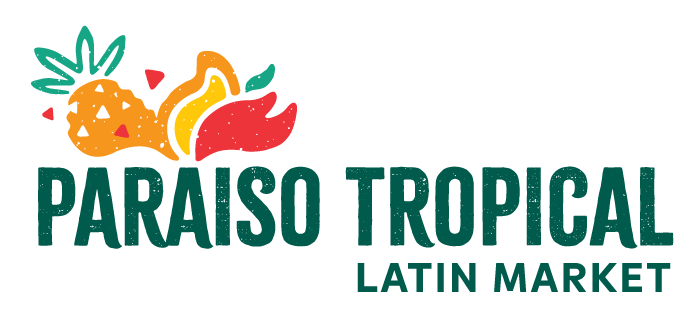Sharing the dish that brings people together

Photo: Rubén Contreras
Making & eating tamales has long been a holiday tradition for many Latin Americans, particularly amongst Mexicans, Guatemalans, Salvadorans, Hondurans, and Colombians, to name a few. At Paraiso Tropical Latin Food Market, advance Christmas & New Years’ orders are made each year to allow kitchen staff time to prep and cook enough tamales as they are hot sellers.
Although the Christmas season will be much different this year, the Edmonton-based Latino grocery store still hopes to bring a taste of the tropics to beat both the winter and coronavirus blues for local Latinos and non-Latinos alike.
A variety of special in-store promotions are on for the month of December, including ready-made tamal pick-up orders for both Christmas & New Years, as well as discounts on ingredients to make tamales for those who prefer to make them at home.
So you might be wondering: what exactly is a tamal and where did it originate? Hints can be found within the dish’s name, which comes from “tamalli” in Nahuatl, meaning “wrapped”.
“As far as I understand, the tamal is like a Mesoamerican dish […] so you can make the argument that they originate from any [Latin American] country with a strong Indigenous history of working with corn and the corn husks and the banana leaves, and just preparing dishes that way,” says Paraiso Tropical owner Jesus Gonzalez Rivas Jr. “The basics of a tamal is the corn dough and then whatever you want to stuff it with is just to your liking.”
Gela Cabrera Loa of Gelopolis, who helps Paraiso Tropical with graphic design and social media, is from Mexico and adds that the tamal is an example of food fusion.
“Because in Mexico, we didn’t have chicken [before]. We didn’t have pork. And the Spanish brought those. So before, [Indigenous peoples] didn’t have those meats. They didn’t have pork lard. [Tamales] were [made] mostly with vegetables.”
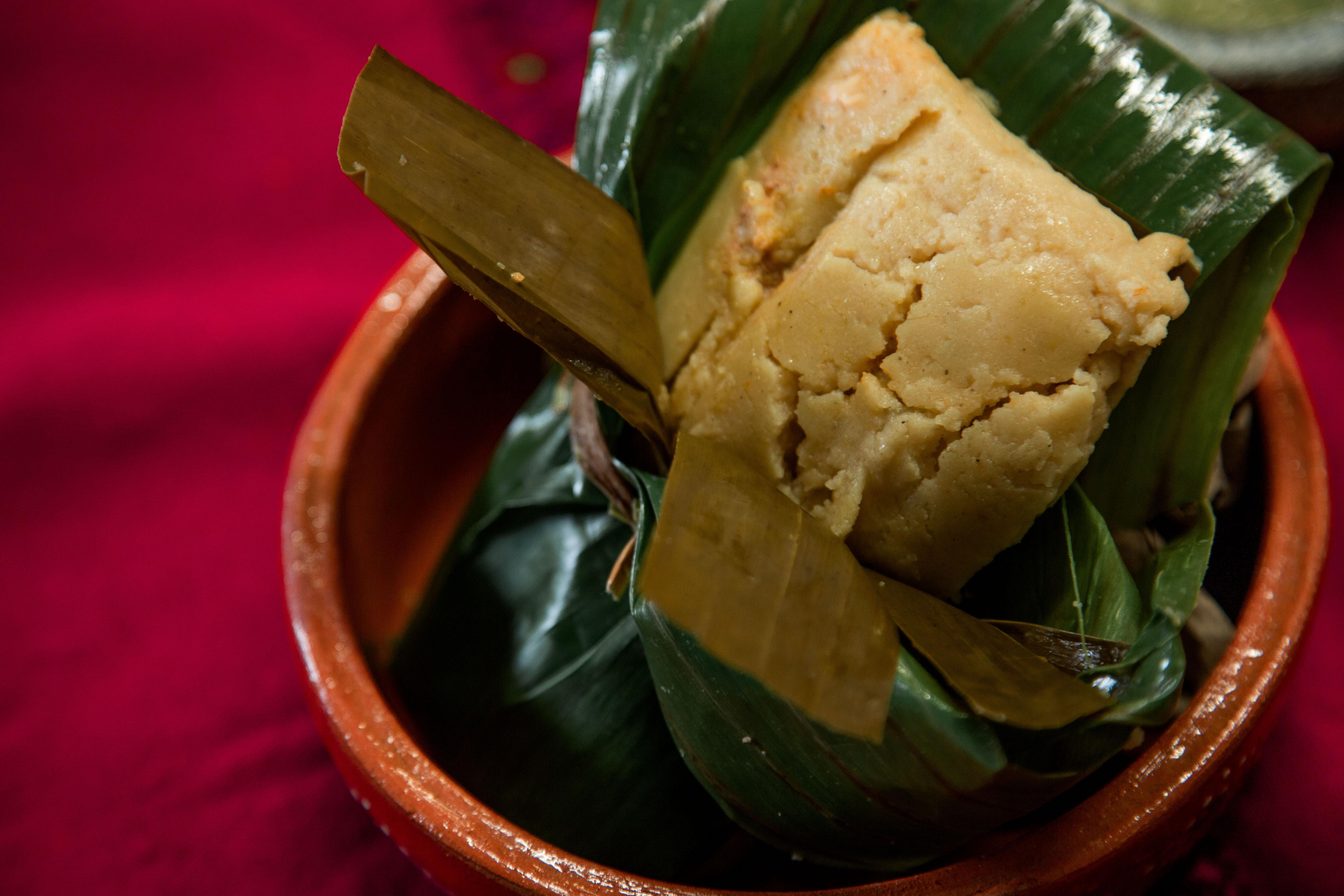
Photo Rubén Contreras
Known by different names
With European colonization and migration throughout the Americas, the tamal has also made its way to various regions.
“You see [tamales] in Guatemala. You see them in El Salvador, Ecuador, even Brazil – [Brazilians] go by a different name,” Gonzalez Rivas Jr. shares. “Instead of calling it tamales, they call it pamonha (“pamunha” in Tupi).

Photo: Barna Tanko
“That’s the other thing: the name is not just ‘tamales,’” he raises. “Essentially when we’re talking about wrapped corn dough, they come with many different names. And [just calling them] ‘tamales’ would be doing a disservice because they have several names, such as tamales, pamonha, hallacas…[which] is what they call them in Venezuela and some regions of Colombia. Also in Ecuador, they use that term.”
Another popular name for tamales is humitas (“jumint’a” in Quechua), which is commonly seen in Andean countries such as Bolivia, Chile, and Peru, says Gonzalez Rivas Jr.
A Paraiso kitchen staple
When Paraiso North’s kitchen opened in 2000, one of the first menu items was Salvadoran tamales, which was a recipe from Gonzalez Rivas Jr.’s mother and one of Paraiso’s founders, Alba Gonzalez. As Paraiso’s cooks over time have come from different Latin American countries, tamal recipes from other regions were shared. Nowadays, Paraiso offers three different kinds – Salvadoran, Mexican, and Colombian – every day of the week, all year long.
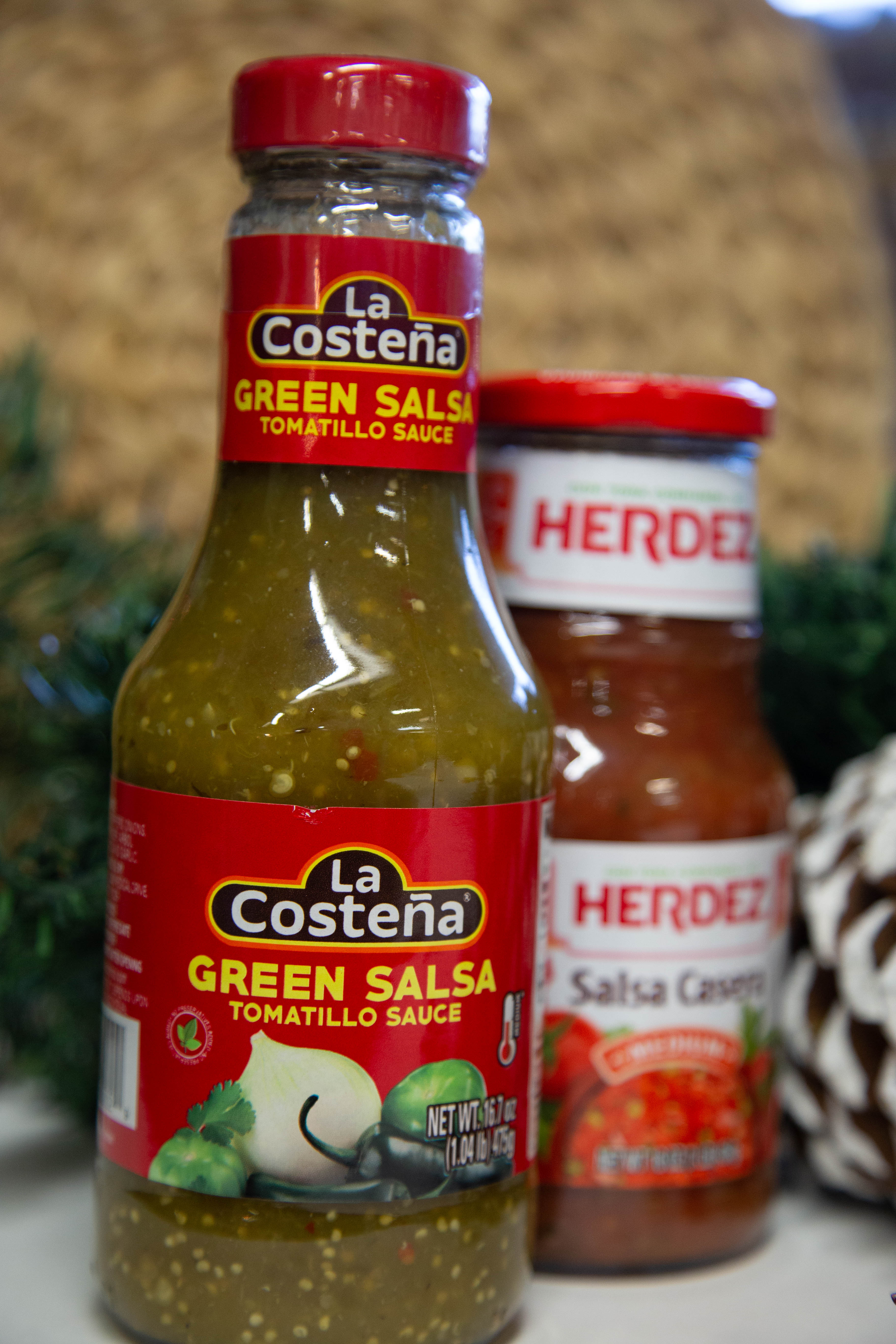
Photo: Rubén Contreras
The ingredients used to make Paraiso’s tamales are either imported from Latin America, such as corn husks and banana leaves, or they come from local Hutterite farmers, such as the meats in the fillings. Tamales can be flavoured up with a variety of spices and chiles (chilis).
“I think all of the dried chiles that you can find at Paraiso, you can make different kinds of tamales: they can be with salsa verde, mole, chipotle salsa, chile ancho, pasilla salsa or a mix,” suggests Cabrera Loa.
Meanwhile, for Salvadoran tamales, the spice mix commonly used is relajo, shares Gonzalez Rivas Jr.
“It’s a very popular mix, because it’s used for [tamales and pan con pavo a.k.a. Salvadoran turkey sandwich]. We make a broth out of [relajo] like a marinade, and that’s what we use to marinate the meats and also to flavour up the dough.
“There will be slight variations in relajo, but it generally consists of key ingredients. For example: annatto seeds, sesame seeds, pumpkin seeds, dried chili peppers – which is commonly guajillo and ancho pepper,” Gonzalez Rivas Jr. explains. “[Relajo] has bay leaf, coriander seeds, and cumin as well. Sometimes, it’ll have cacao seeds.”
For those who have been having trouble finding relajo mix or are now curious to try it, Paraiso Tropical sells them, custom-made with imported ingredients for the store.
Paraiso’s three types of tamales
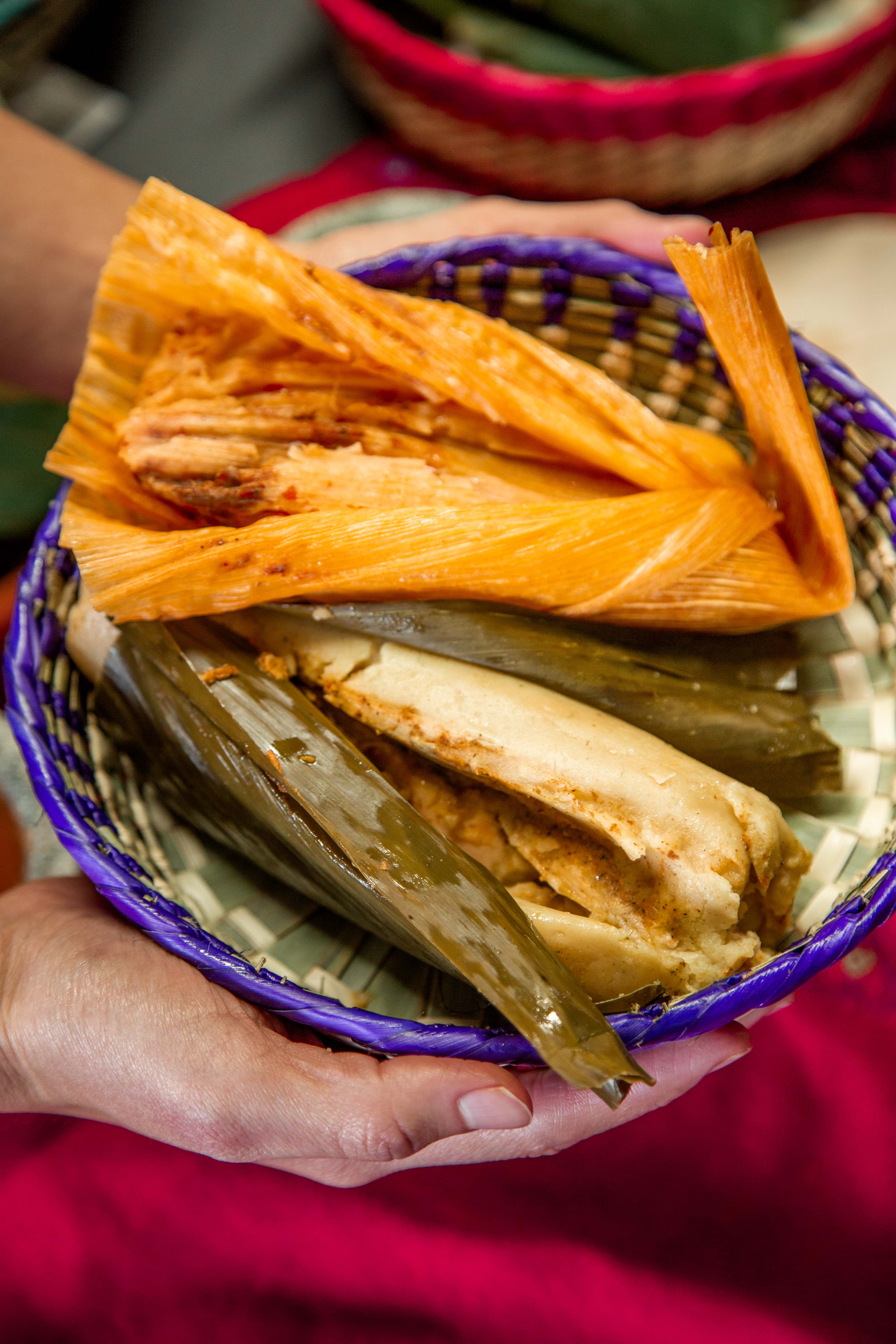
Photo: Rubén Contreras
For the Christmas season, customers have the option of choosing three main kinds of tamales: Colombian (chicken and pork), Mexican (pork), and Salvadoran (chicken). Tamales are also gluten-free, since they are made out of corn, and although the ones offered by Paraiso year-round are not vegetarian, Christmas orders offer a vegetarian option as well.
“In El Salvador, for Christmastime, we’ll prepare tamales with chipilín – which is a special type of green vegetable and almost has the consistency of spinach – as opposed to adding meat,” Gonzalez Rivas Jr. says, adding that chipilín can be found in Paraiso Tropical’s freezer section.
Within Latin America, the types of tamales that can be found vary greatly according to region, but generally, Paraiso’s Salvadoran tamales which are made for Christmas are wrapped with banana leaf or plantain leaf.
“Why [wrapping with banana or plantain leaf is] necessary is because the flavour of the banana leaf really gives the [corn] dough a unique flavour,” Gonzalez Rivas Jr. explains. “But the fillings are endless. People will put refried beans. They’ll make them [with] pork. They’ll make them [with] vegetables.”
Contrary to the Salvadoran tamal, Paraiso’s Mexican tamal is made with corn husk with the corn dough being prepared in a different way that makes it drier and a bit more crumbly in texture compared to the Salvadoran ones, which are very soft.

Photo: Rubén Contreras
“Because [the Mexican tamales that we make is] wrapped in corn husk, the flavour is completely different,” says Gonzalez Rivas Jr. “And the chili peppers that we season in the Mexican tamal [are different]. We use a lot of annatto seeds and guajillo peppers and ancho peppers.
The way that broth is made is completely different. The flavours are very distinct in that sense.”
There are soft Mexican tamales that can be found elsewhere, however, and Cabrera Loa dishes out some secrets on how to make them. In some cases, people cook the flours twice.
“They can cook the flour in the big olla (pot) and when the flour is already cooked and thick – like it’s still liquid, but it’s cooked – then you just set up [the tamal] and wrap it – and then you cook it again.
“Those get super soft and moist. My mom likes to make some [where] she doesn’t cook the flour [again] but she makes it more liquid, so they get softer,” Cabrera Loa shares. “She calls them tamales de cuchara (spoon tamales), because they’re a bit less solid.”
More on Mexican tamales
In Mexico, Cabrera Loa says that there are roughly ten kinds of different tamales depending on the city or region, sharing a cute graphic that she found of Mexican tamales mapped out.
“The classics are with corn husk: I consider them the most popular. They’re more from Mexico City [or central] Mexico. They also have corn flour but different called masa cernida. There are classics like mole, rojo, verde, dulce (sweet) and rajas con queso that is just like peppers and cheese.
“And I would say the second most popular are the oaxaqueños – they are with the banana leaf,” adds Cabrera Loa, saying that Mexico also has many tamales wrapped in banana leaf, but tamales oaxaqueños are the most popular in that category. “Even we have a giant tamal that it’s called Zacahuil: it’s almost like a huge lasagna but a tamal. It’s really good.”
Just north of Veracruz, there are tamales that are especially cooked for Día de Muertos (Day of the Dead) and wrapped in banana leaf stuffed with orange pumpkin and shrimp.
“They are special and hard to find, but they are really one of my favourites,” Cabrera Loa admits. “In the same region for Day of the Dead, they also do [tamales in] banana leaf with black beans and shrimp. Those are really good, too.”
Tamal antioqueño
Back at Paraiso, Gonzalez Rivas Jr. shares that their in-house Colombian tamal (a.k.a. tamal antioqueño) was created by a chef that used to work in Paraiso’s kitchen and who was from Antioquia, a department in Colombia (like a province in Canada). Compared to the Mexican and Salvadoran tamales, which are small and rectangular, the tamal antioqueño is more of a proper meal – “like one giant cube of tamal” in Gonzalez Rivas Jr.’s own words.
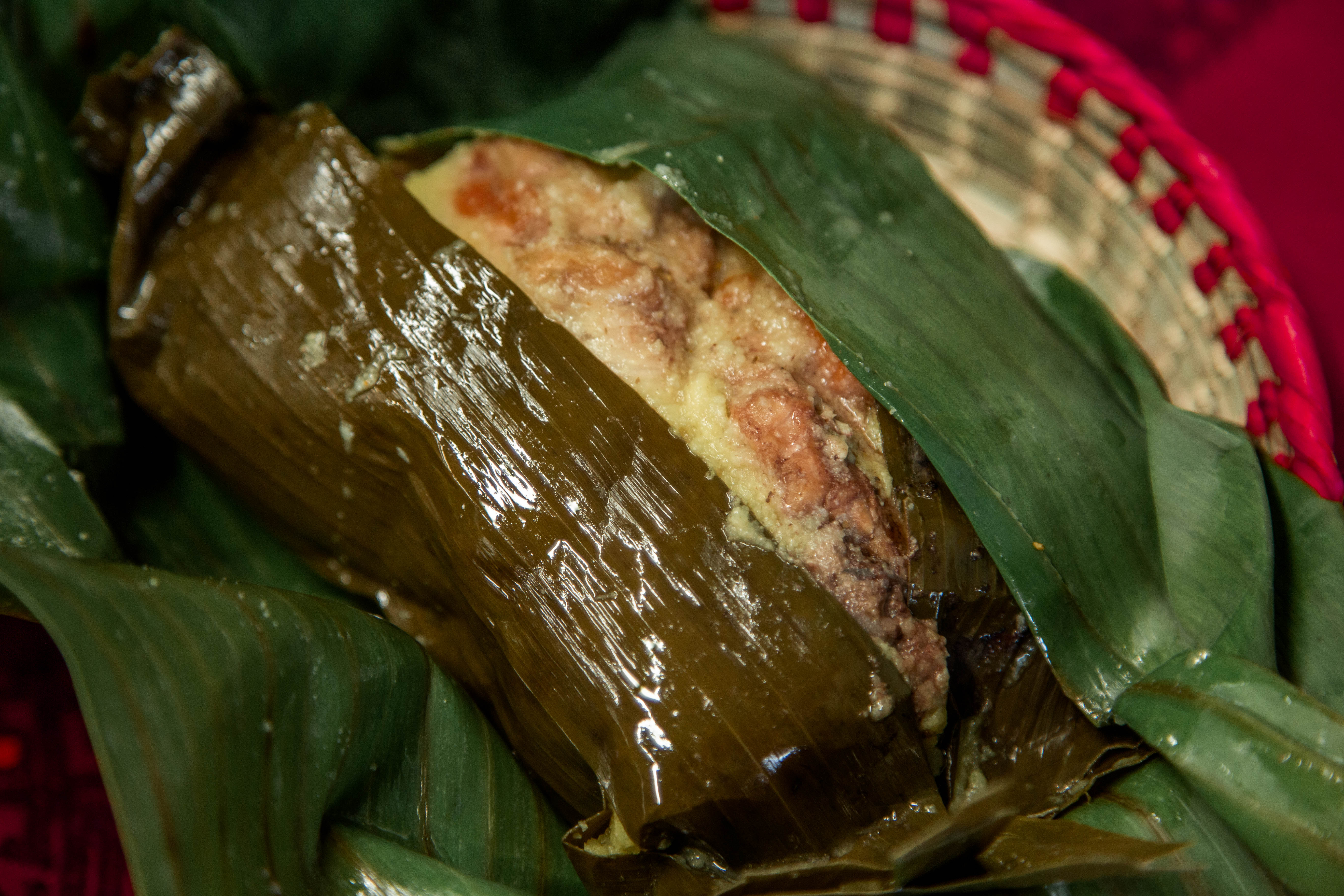
Photo: Rubén Contreras
“So you open up [the tamal antioqueño], and it’s twice the size of our other tamales, and it’s more encompassing with other ingredients in it,” he describes, adding that this tamal, which is wrapped in banana leaves, has pork rib, chicken drumstick, carrots, potatoes, and sometimes, rice. “Because it’s cooked with more ingredients and with a different blend of spices that are particular to Colombia, that really differentiates it in that way.”
Popular spices found in tamal antioqueños, Gonzalez Rivas Jr. shares, are annatto, turmeric, and cumin.
Tamales take time
Traditionally, people would grind up corn to make it into a masa (dough) before cooking it and adding spices to prepare the tamal, says Gonzalez Rivas Jr.
“In our store, [we use] a shortcut, because we don’t have the actual raw grain to be grinding it or anything like that,” he tells, sharing that the Paraiso team cooks the corn flour to make a dough with their own blend of special ingredients. “No one actually goes through the trouble of grinding the corn, although there are some people who do it.”

Photo: Rubén Contreras
Tamal is not a dish to be made in small batches, either.
“The thing is that every time that you cook them – because of all the processes and the [fact that the] big olla [or tamalera, meaning “tamal steamer”] that we use to cook them in is big – most of the time, you make at least thirty tamales,” explains Cabrera Loa. “My mom – she cooks like sixty.”
At Paraiso, they make roughly two giant pots of tamales, with each pot holding fifty litres each. That makes around 200 to 300 tamales at a time, Gonzalez Rivas Jr. shares.
Once the tamal is ready to be built, he continues, the various ingredients are separated: the dough; the banana leaves already stacked up; and all the other ingredients to fill the tamal with, such as chicken, potatoes, and carrots.
“So you start off putting the banana leaf flat and the first thing that you usually tend to throw on is the corn dough. And then you start grabbing the other ingredients – [for example], your chicken – and then you start stuffing it into the corn dough. You grab your potatoes. You put everything in there,” Gonzalez Rivas Jr. explains in detail. “Once you’ve got everything in there, you wrap [the fillings] up in the same banana leaf.“
Essentially, the banana leaf is like a plate during prep, Gonzalez Rivas Jr. says, before it becomes a tamal wrap to be cooked. After the tamal is wrapped and sealed, then it goes through a second process of cooking where it is steamed on a tamalera placed on a stovepot. Paraiso will be selling these very large pots throughout Christmastime (the blue ones are the traditional ones) with some that can hold as little as twenty tamales and some that can hold up to seventy to eighty tamales.

Photo: Paraiso Tropical team
At Paraiso, the tamales, which are already wrapped in banana leaf, are wrapped in aluminum foil to help with the cooking process and to further capture the flavour, adds Gonzalez Rivas Jr., although traditionally, no aluminum foil is used.
The Christmas connection
One normally goes through the trouble of cooking turkey only on Thanksgiving or Christmas – you wouldn’t make it everyday. Similarly, tamales are a special treat and not something to make in a rush.
“[Making tamales] is definitely labour intensive,” says Gonzalez Rivas Jr. without hesitation. “It involves a lot of cooking time for the dough and a lot of cooking time after the tamales are prepared and [then there’s the time spent] to assemble each and every tamal. You have to assemble every one by hand.”
He continues, saying that’s the very reason that tamales are not made in small amounts but rather large amounts.
“I can see that some sort of the history or traditions may be in the sense that when you’re preparing a large batch, it’s a family-centred event, right? It’s something you do as a family thing, so everyone does their part in preparing some part of the tamal.”

Photo: Rubén Contreras
Cabrera Loa agrees that when you make tamales, you typically cook as a team with family.
“It’s good [for] bonding time. [When] I was a kid, my mom took my cousin and me, for example, to help cut and wash the banana leaves, and we also helped to wrap and set up [the tamales] like a production line.”
Gonzalez Rivas Jr. makes the connection between the communal nature of making tamales and the times in which they are made.
“I think because [Christmastime] is such a special occasion, you prepare tamales whenever there are big events which cater to a large amount of people. They can be festivals. They can be funerals. They could be birthdays.”
Paraiso’s cooks typically prep tamales two days in advance, although some ingredients can be prepared on the same day that the tamales are being cooked, shares Gonzalez Rivas Jr.
While social gatherings have been restricted for the upcoming holidays, Paraiso Tropical is still happy to keep the tradition of eating tamales going, even if it is in smaller batches this year.
Make your own tamales
Want to take a stab at prepping tamales at home? Gonzalez Rivas Jr. shares the essentials:
- Wrapping: either corn husk or banana leaf
- Corn-based dough: there are different brands depending on the country & region of the type of tamal being made, but the two most popular brands are Maseca & Harina P.A.N. (the latter means “bread flour”)
- Pork lard or vegetable-based shortening: to bring the tamales together
- Fillings & seasonings: whatever you like depending on the country or region that you want your tamal to taste like

Photo: Rubén Contreras
“I think most of the time, you can just use one kind of chile,” Cabrera Loa shares. “But [usually], you use at least two chiles, and the dried chiles are more common [in Mexico]. I think the only [tamales] that don’t have dried chiles are the verdes and the rajas.”
Cabrera Loa confesses that it’s hard to make good tamales.
“I know a lot of people in Canada that – when I meet them – they say that they don’t like tamales,” she recalls. “And when they taste good tamales – homemade – like the ones that my mom makes or the ones that Paraiso makes – they change their minds, and they like them.”
Tropical Christmas In-Store Specials
The following items are discounted throughout the month of December if you’re looking to make tamales from scratch!
- Selecta Corn Husks (1 lb) at both stores – purchase more than 2 bags & receive a discount
- Maseca corn flour (50 lbs) at Paraiso South only
- Maseca corn flour (2 lbs) at both stores – purchase more than 2 bags & receive a discount

Photo: Rubén Contreras
Up for a tamales tasting right now? Give us a call to order for curb-side pick-up or order via delivery app on SkiptheDishes or Uber Eats!
Paraiso Tropical – Northside
9136-118 Avenue NW, Edmonton, AB
Mondays to Saturdays: 9:30am-7:00pm
Sundays: 11:00am-4:00pm
780.479.6000
Paraiso Tropical – Southside
6926-104 Street NW, Edmonton, AB
Mondays to Saturday: 9:30am-7:00pm
Sundays: 11:00am-4:00pm
780.705.9711
Wanna order tamales for Christmas or New Years’ pick-up? Fill out the online form by December 21st (Christmas Eve pick-up) or December 29 (New Years’ Eve pick-up)!
